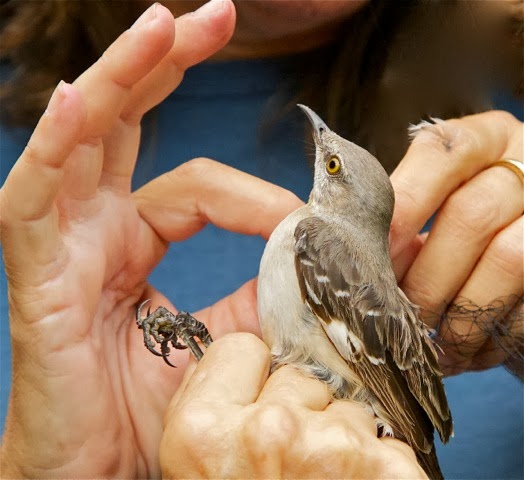We have made big strides in the understanding of bird movement on the property and now that it is "winter" we are finding more birds in the area of the pond. The pond is actually some retained water that should flow but there are several ridges across the water that make small pools. We strung a net across one of the dry berms and had almost instant success.
New net location spanning pond
Photo by Bill Eaton
We were hoping for an Eastern Phoebe but did not succeed (yet). We caught a hatch-year Indigo Bunting. Many were surprised to see the brownish color of this bird and to see some subtle streaking on it.
Indigo Bunting
Photo by Pat Marshall
This net also gave us a Palm Warbler and a Yellow-rumped Warbler.
Palm Warbler (western subspecies)
Photo by Bill Eaton
Yellow-rumped Warbler (Myrtle subspecies)
Photo by Bill Eaton
We captured two other Palm Warblers, a Gray Catbird, and a Northern Mockingbird.
Palm Warbler and its cute yellow pads of its feet
Photo by Bill Eaton
Northern Mockingbird
Photo by Bill Eaton
Sometimes three hands are better than two! Larger birds are harder to hold and still be able to remove the net. This bird's wing was very tangled so Nancy Price held it could be safely extracted.
Northern Mockingbird
Photo by Bill Eaton
The outer tail feathers fold underneath and you can see that this bird is missing its white outer tail feathers on its left side. The new feathers are "in sheath" growing in.
One of the recaptures was a White-eyed Vireo that we banded in February. Bill Eaton got some wonderful photos. One really shows how wingbars are formed from white edgings on individual wing covert feathers.
White-eyed Vireo
White-eyed Vireo - wingbar
Next banding will be December 10. Nets go up at 6:30 am.









No comments:
Post a Comment